Shichao Fan
RoboMIND: Benchmark on Multi-embodiment Intelligence Normative Data for Robot Manipulation
Dec 18, 2024Abstract:Developing robust and general-purpose robotic manipulation policies is a key goal in the field of robotics. To achieve effective generalization, it is essential to construct comprehensive datasets that encompass a large number of demonstration trajectories and diverse tasks. Unlike vision or language data that can be collected from the Internet, robotic datasets require detailed observations and manipulation actions, necessitating significant investment in hardware-software infrastructure and human labor. While existing works have focused on assembling various individual robot datasets, there remains a lack of a unified data collection standard and insufficient diversity in tasks, scenarios, and robot types. In this paper, we introduce RoboMIND (Multi-embodiment Intelligence Normative Data for Robot manipulation), featuring 55k real-world demonstration trajectories across 279 diverse tasks involving 61 different object classes. RoboMIND is collected through human teleoperation and encompasses comprehensive robotic-related information, including multi-view RGB-D images, proprioceptive robot state information, end effector details, and linguistic task descriptions. To ensure dataset consistency and reliability during policy learning, RoboMIND is built on a unified data collection platform and standardized protocol, covering four distinct robotic embodiments. We provide a thorough quantitative and qualitative analysis of RoboMIND across multiple dimensions, offering detailed insights into the diversity of our datasets. In our experiments, we conduct extensive real-world testing with four state-of-the-art imitation learning methods, demonstrating that training with RoboMIND data results in a high manipulation success rate and strong generalization. Our project is at https://x-humanoid-robomind.github.io/.
Towards Generalizable Referring Image Segmentation via Target Prompt and Visual Coherence
Dec 01, 2023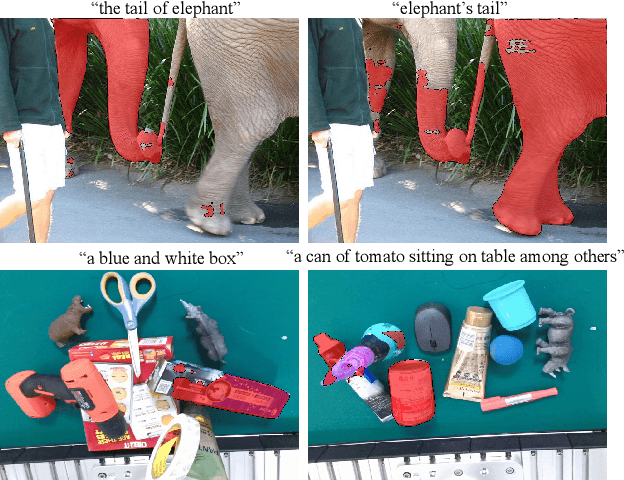
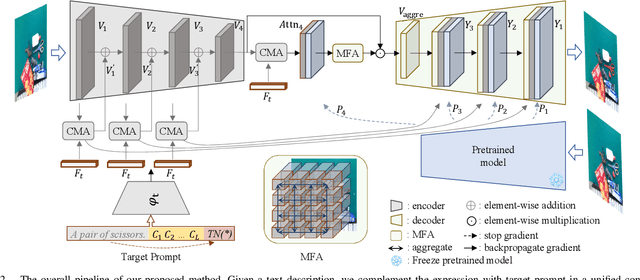
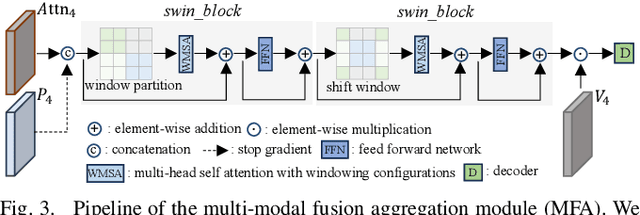
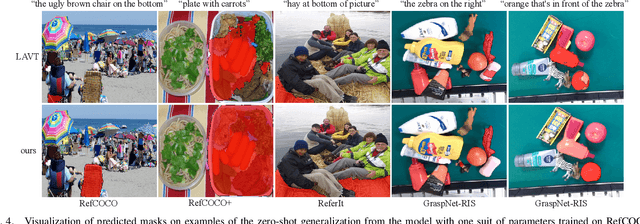
Abstract:Referring image segmentation (RIS) aims to segment objects in an image conditioning on free-from text descriptions. Despite the overwhelming progress, it still remains challenging for current approaches to perform well on cases with various text expressions or with unseen visual entities, limiting its further application. In this paper, we present a novel RIS approach, which substantially improves the generalization ability by addressing the two dilemmas mentioned above. Specially, to deal with unconstrained texts, we propose to boost a given expression with an explicit and crucial prompt, which complements the expression in a unified context, facilitating target capturing in the presence of linguistic style changes. Furthermore, we introduce a multi-modal fusion aggregation module with visual guidance from a powerful pretrained model to leverage spatial relations and pixel coherences to handle the incomplete target masks and false positive irregular clumps which often appear on unseen visual entities. Extensive experiments are conducted in the zero-shot cross-dataset settings and the proposed approach achieves consistent gains compared to the state-of-the-art, e.g., 4.15\%, 5.45\%, and 4.64\% mIoU increase on RefCOCO, RefCOCO+ and ReferIt respectively, demonstrating its effectiveness. Additionally, the results on GraspNet-RIS show that our approach also generalizes well to new scenarios with large domain shifts.
An Empirical Study on Multi-Domain Robust Semantic Segmentation
Dec 08, 2022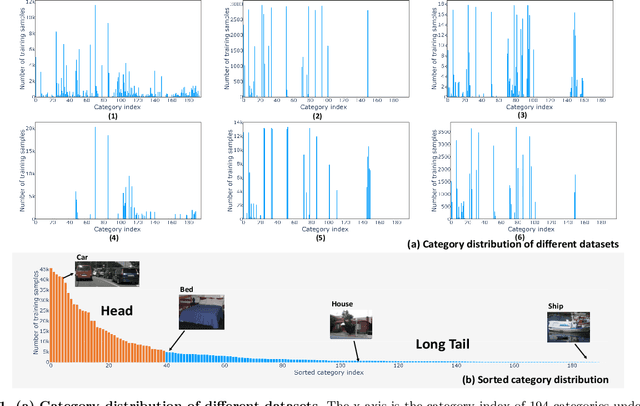
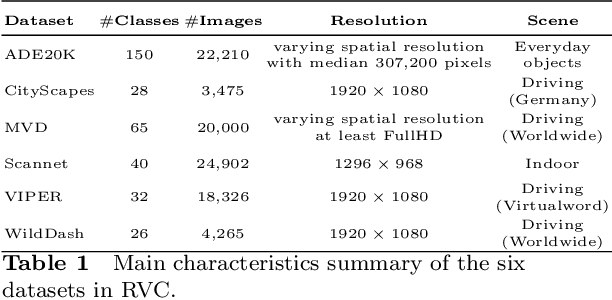
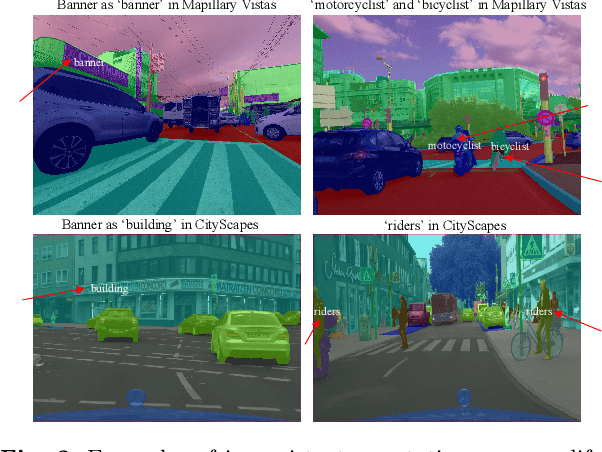

Abstract:How to effectively leverage the plentiful existing datasets to train a robust and high-performance model is of great significance for many practical applications. However, a model trained on a naive merge of different datasets tends to obtain poor performance due to annotation conflicts and domain divergence.In this paper, we attempt to train a unified model that is expected to perform well across domains on several popularity segmentation datasets.We conduct a detailed analysis of the impact on model generalization from three aspects of data augmentation, training strategies, and model capacity.Based on the analysis, we propose a robust solution that is able to improve model generalization across domains.Our solution ranks 2nd on RVC 2022 semantic segmentation task, with a dataset only 1/3 size of the 1st model used.
Unsupervised Learning of 3D Semantic Keypoints with Mutual Reconstruction
Mar 19, 2022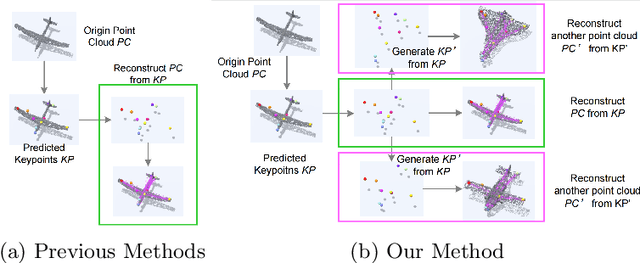

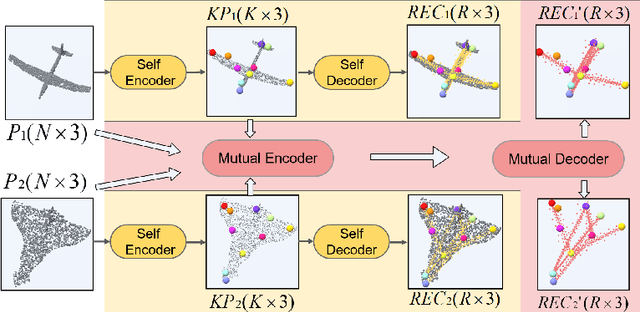

Abstract:Semantic 3D keypoints are category-level semantic consistent points on 3D objects. Detecting 3D semantic keypoints is a foundation for a number of 3D vision tasks but remains challenging, due to the ambiguity of semantic information, especially when the objects are represented by unordered 3D point clouds. Existing unsupervised methods tend to generate category-level keypoints in implicit manners, making it difficult to extract high-level information, such as semantic labels and topology. From a novel mutual reconstruction perspective, we present an unsupervised method to generate consistent semantic keypoints from point clouds explicitly. To achieve this, the proposed model predicts keypoints that not only reconstruct the object itself but also reconstruct other instances in the same category. To the best of our knowledge, the proposed method is the first to mine 3D semantic consistent keypoints from a mutual reconstruction view. Experiments under various evaluation metrics as well as comparisons with the state-of-the-arts demonstrate the efficacy of our new solution to mining semantic consistent keypoints with mutual reconstruction.
 Add to Chrome
Add to Chrome Add to Firefox
Add to Firefox Add to Edge
Add to Edge